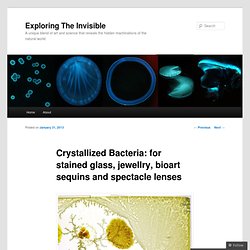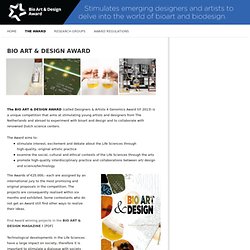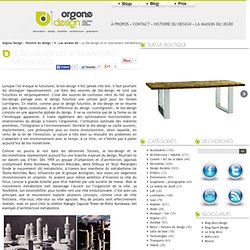

Oikos - Brandon Ballengée. Crystallized Bacteria: for stained glass, jewellry, bioart sequins and spectacle lenses. Bacteria are grown in the lab on media containing nutrients and water, which is converted into a firm gel by the addition of agar.

The media feels quite solid to the touch and provides a good surface for bacterial growth despite comprising 98.5% water. When this water is carefully removed, the agar and the bacteria form a thin transparent film in which the agar has become a glassy state and the bacteria embedded within it forming a novel bio-crystalline state. These forms retain the essence of the originating bacteria, but as they are inactivated by the process, they are safe, and make ideal embellishments and accessories for arts projects of all kinds. Like this: Like Loading... Biological Atelier SS 2082. Bioartira. BIOart. Alexandra DAISY Ginsberg. Hunter Cole - Artist and Scientist. ONE Lab. Open Wetlab. The Open Wetlab focuses on life sciences and the design and ethics of life.

We want to involve the industry, artists and designers, but also the political forces and the public, hands-on in the shaping of biotechnology, as well as in what biotechnology creates. The Open Wetlab aims to offer a platform and discuss other forms of knowledge production in addition to the scientific one. Via a hands-on approach (where the public itself enters in contact and interacts with the technology) the Wetlab wants to give a different interpretation for the debate on usefulness and desirability of Life Sciences in society. With projects such as Designers & Artists 4 Genomics and Studiolab Utopian Practices, Open Wetlab promotes the production of bio-art because we believe that bio-art is visionary and can be guiding for new prototypes and applications.
Thus, we investigate to what extent and how art and science can work together and in what way art can influence a scientific agenda. Dominic Elvin – Art and Design for the 21st Century — Sculpture – Fashion – Interior Design – Installations – Styling – Cybernetic Bodyware. Bio Art & Design Awards. The BIO ART & DESIGN AWARD (called Designers & Artists 4 Genomics Award till 2013) is a unique competition that aims at stimulating young artists and designers from The Netherlands and abroad to experiment with bioart and design and to collaborate with renowned Dutch science centers.

The Award aims to: stimulate interest, excitement and debate about the Life Sciences through high-quality, original artistic practiceexamine the social, cultural and ethical contexts of the Life Sciences through the artspromote high-quality interdisciplinary practice and collaborations between art/ design and science/technology The Awards of €25.000,- each are assigned by an international jury to the most promising and original proposals in the competition. The projects are consequently realised within six months and exhibited. Some contestants who do not get an Award still find other ways to realize their ideas. Plongee Culturelle - Foire Saint Germain - Marie-Sarah Adenis - 3e Nuit de la Photographie contemporaine.
Synth-ethic: Art and Synthetic Biology Exhibition — Vienna, Austria. DIYsect. SymbioticA : SymbioticA : The University of Western Australia. Bioartsociety. ART+BIO Collaborative - ART+BIO Collaborative. Pavillon 35.
Hackteria.org. News & Works of RAPHAEL KIM. This too shall pass. Intro_panel. 502 Proxy Error. Mécanhumanimal, Enki Bilal au Musée des arts et métiers. This is ludo. Le bio-design et le mouvement métaboliste. Lorsque l’on évoque le futurisme, le bio-design n’est jamais très loin.

Il faut pourtant les distinguer rigoureusement, car bien des oeuvres de bio-design ne sont pas futuristes et réciproquement. L’une des sources de confusion vient du fait que le bio-design partage avec le design futuriste une certain goût pour les formes curvilignes. En réalité, comme pour le design futuriste, le bio-design ne se résume pas à des lignes onduleuses. A la différence du design «curviligniste», le bio-design consiste en une approche globale du design. Il ne se contente pas de la forme ou de l’enveloppe apparente, il traite également des optimisations fonctionnelles et relationnelles du design à travers l’ergonomie, l’utilisation optimale des matières premières, l’intégration à l’environnement. Comme on pourra le voir dans les décennies futures, le bio-design et le bio-mimétisme représentent aujourd’hui une branche majeure du design. Kiyonoiri Kikutake – Marine City – 1963. Biologists of Etsy - Teams Etsy.